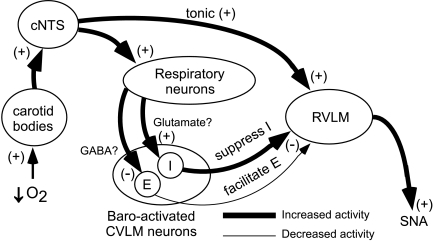Figure 8. Proposed model for the impact of CVLM activity on RVLM activity during hypoxia.
Ventilation with hypoxic air decreases arterial  and stimulates the peripheral chemoreceptors to initiate the chemoreceptor reflex (for comprehensive review see Guyenet, 2000). Chemoreceptor afferents activate neurones in the caudal region of the nucleus of the tractus solitarius (cNTS). By means of a direct, respiratory-independent input to the RVLM, cNTS neurones activate the RVLM to increase SNA. The cNTS neurones also innervate central respiratory neurones and promote enhanced central respiratory drive (increase PND). Within the CVLM are populations of baro-activated neurones with principal respiratory-related activity during inspiration (I) or respiratory-related activity during expiration (E). The I baro-activated neurones are activated by hypoxia, which in turn suppresses I activity in the RVLM and SNA during hypoxia. The E baro-activated neurones are inhibited during hypoxia and facilitate the excitation of RVLM neurones and SNA during the expiratory phase of respiration.
and stimulates the peripheral chemoreceptors to initiate the chemoreceptor reflex (for comprehensive review see Guyenet, 2000). Chemoreceptor afferents activate neurones in the caudal region of the nucleus of the tractus solitarius (cNTS). By means of a direct, respiratory-independent input to the RVLM, cNTS neurones activate the RVLM to increase SNA. The cNTS neurones also innervate central respiratory neurones and promote enhanced central respiratory drive (increase PND). Within the CVLM are populations of baro-activated neurones with principal respiratory-related activity during inspiration (I) or respiratory-related activity during expiration (E). The I baro-activated neurones are activated by hypoxia, which in turn suppresses I activity in the RVLM and SNA during hypoxia. The E baro-activated neurones are inhibited during hypoxia and facilitate the excitation of RVLM neurones and SNA during the expiratory phase of respiration.

